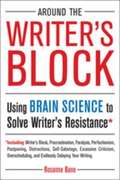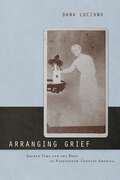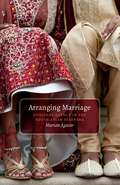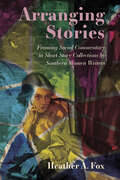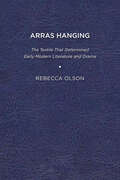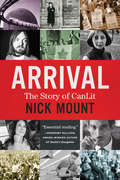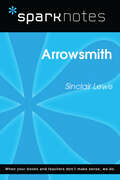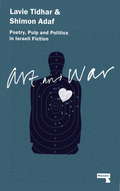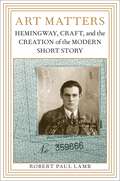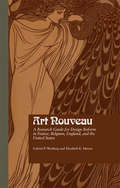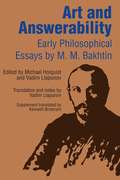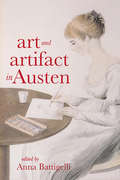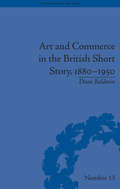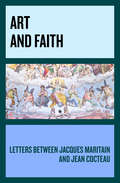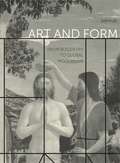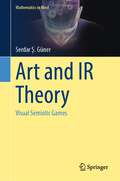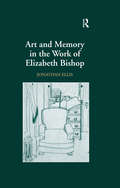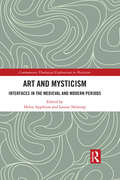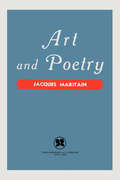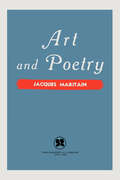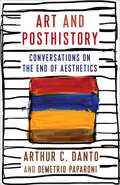- Table View
- List View
Around the Writer's Block: Using Brain Science to Solve Writer's Resistance
by Rosanne BaneDiscover the tricks that your brain uses to keep you from writing--and how to beat them.Do you: Want to write, but find it impossible to get started? Keep your schedules so full that you don't have any time to write? Wait until the last minute to write, even though you know you could do a better job if you gave yourself more time? Suddenly remember ten other things that you need to do whenever you sit down to write? Sabotage your own best efforts with lost files, missed deadlines, or excessive self-criticism?The good news is that you're not lazy, undisciplined, or lacking in willpower, talent or ambition. You just need to learn what's going on inside your brain, and harness the power of brain science to beat resistance and develop a productive writing habit.In Around the Writer's Block, Rosanne Bane-- a creativity coach and writing teacher for more than 20 years-- uses the most recent breakthroughs in brain science to help us understand, in simple, clear language, where writing resistance comes from: a fight-or-flight response hard-wired into our brain, which can make us desperate to flee the sources of our anxieties by any means possible.Bane's three-part plan, which has improved the productivity of thousands of writers, helps you develop new reliable writing habits, rewire the brain's responses to the anxiety of writing, and turn writing from a source of stress and anxiety into one of joy and personal growth.
Arranging Grief: Sacred Time and the Body in Nineteenth-Century America (Sexual Cultures #2)
by Dana Luciano2008 Winner, MLA First Book PrizeCharting the proliferation of forms of mourning and memorial across a century increasingly concerned with their historical and temporal significance, Arranging Grief offers an innovative new view of the aesthetic, social, and political implications of emotion. Dana Luciano argues that the cultural plotting of grief provides a distinctive insight into the nineteenth-century American temporal imaginary, since grief both underwrote the social arrangements that supported the nation’s standard chronologies and sponsored other ways of advancing history.Nineteenth-century appeals to grief, as Luciano demonstrates, diffused modes of “sacred time” across both religious and ostensibly secular frameworks, at once authorizing and unsettling established schemes of connection to the past and the future. Examining mourning manuals, sermons, memorial tracts, poetry, and fiction by Harriet Beecher Stowe, William Apess, James Fenimore Cooper, Catharine Maria Sedgwick, Susan Warner, Harriet E. Wilson, Herman Melville, Frances E. W. Harper, Frederick Douglass, Abraham Lincoln, Elizabeth Keckley, and Ralph Waldo Emerson, Luciano illustrates the ways that grief coupled the affective body to time. Drawing on formalist, Foucauldian, and psychoanalytic criticism, Arranging Grief shows how literary engagements with grief put forth ways of challenging deep-seated cultural assumptions about history, progress, bodies, and behaviors.
Arranging Marriage: Conjugal Agency in the South Asian Diaspora
by Marian AguiarThe first critical analysis of contemporary arranged marriage among South Asians in a global context Arranged marriage is an institution of global fascination—an object of curiosity, revulsion, outrage, and even envy. Marian Aguiar provides the first sustained analysis of arranged marriage as a transnational cultural phenomenon, revealing how its meaning has been continuously reinvented within the South Asian diaspora of Britain, the United States, and Canada. Aguiar identifies and analyzes representations of arranged marriage in an interdisciplinary set of texts—from literary fiction and Bollywood films, to digital and print media, to contemporary law and policy on forced marriage.Aguiar interprets depictions of South Asian arranged marriage to show we are in a moment of conjugal globalization, identifying how narratives about arranged marriage bear upon questions of consent, agency, state power, and national belonging. Aguiar argues that these discourses illuminate deep divisions in the processes of globalization constructed on a fault line between individualist and collectivist agency and in the process, critiques neoliberal celebrations of &“culture as choice&” that attempt to bridge that separation. Aguiar advocates situating arranged marriage discourses within their social and material contexts so as to see past reductive notions of culture and grasp the global forces mediating increasingly polarized visions of agency.
Arranging Stories: Framing Social Commentary in Short Story Collections by Southern Women Writers
by Heather A. FoxBetween the 1880s and the 1940s, opportunities for southern white women writers increased dramatically, bolstered by readers’ demands for southern stories in northern periodicals. Confined by magazine requirements and social expectations, writers often relied on regional settings and tropes to attract publishers and readers before publishing work in a collection. Selecting and ordering magazine stories for these collections was not arbitrary or dictated by editors, despite a male-dominated publishing industry. Instead, it allowed writers to privilege stories, or to contextualize a story by its proximity to other tales, as a form of social commentary. For Kate Chopin, Ellen Glasgow, Marjorie Kinnan Rawlings, and Katherine Anne Porter—the authors featured in this book—publishing a volume of stories enabled them to construct a narrative framework of their own. Arranging Stories: Framing Social Commentary in Short Story Collections by Southern Women Writers is as much about how stories are constructed as how they are told. The book examines correspondence, manuscripts, periodicals, and first editions of collections. Each collection’s textual history serves as a case study for changes in the periodical marketplace and demonstrates how writers negotiated this marketplace to publish stories and garner readership. The book also includes four tables, featuring collected stories’ arrangements and publication histories, and twenty-five illustrations, featuring periodical publications, unpublished letters, and manuscript fragments obtained from nine on-site and digital archives. Short story collections guide readers through a spatial experience, in which both individual stories and the ordering of those stories become a framework for interpreting meaning. Arranging Stories invites readings that complicate how we engage collected works.
Arras Hanging: The Textile That Determined Early Modern Literature and Drama
by Rebecca OlsonTextiles have long provided metaphors for storytelling: a compelling novel “weaves a tapestry” and we enjoy hearing someone “spin” a tale. To what extent, however, should we take these metaphors seriously? Arras Hanging: The Textile That Determined Early Modern Literature and Drama reveals that in the early modern period, when cloth-making was ubiquitous and high-quality tapestries called arras hangings were the most valuable objects in England, such metaphors were literal. The arras in particular provided a narrative model for writers such as Edmund Spenser and William Shakespeare, who exploited their audience’s familiarity with weaving to engage them in highly idiosyncratic and “hands on” ways. Specifically, undescribed or “blank” tapestries in the period’s fiction presented audiences with opportunities to “see” whatever they desired, and thus weave themselves into the story. Far more than background objects, literary and dramatic arras hangings have much to teach us about the intersections between texts and textiles at the dawn of print, and, more broadly, about the status of visual art in post-Reformation England. Published by University of Delaware Press. Distributed worldwide by Rutgers University Press.
Arrival: The Story of CanLit
by Nick Mount“The most important book to be written in more than 40 years about the rise of Canadian literature… Arrival: The Story of CanLit brims and crackles, in equal measure, with information and energy.” — Winnipeg Free PressA Globe and Mail Top 100 BookNational Post 99 Best Books of the YearIn the mid-twentieth century, Canadian literature transformed from a largely ignored trickle of books into an enormous cultural phenomenon that produced Margaret Atwood, Alice Munro, Michael Ondaatje, Mordecai Richler, and so many others. In Arrival, acclaimed writer and critic Nick Mount answers the question: What caused the CanLit Boom?Written with wit and panache, Arrival tells the story of Canada’s literary awakening. Interwoven with Mount’s vivid tale are enlightening mini-biographies of the people who made it happen, from superstars Leonard Cohen and Marie-Claire Blais to lesser-known lights like the troubled and impassioned Harold Sonny Ladoo. The full range of Canada’s literary boom is here: the underground exploits of the blew ointment and Tish gangs; revolutionary critical forays by highbrow academics; the blunt-force trauma of our plain-spoken backwoods poetry; and the urgent political writing that erupted from the turmoil in Quebec.Originally published to coincide with the 150th anniversary of Canadian Confederation, Arrival is a dazzling, variegated, and inspired piece of writing that helps explain how we got from there to here.
Arrowsmith (SparkNotes Literature Guide Series)
by SparkNotesArrowsmith (SparkNotes Literature Guide) by Sinclair Lewis Making the reading experience fun! Created by Harvard students for students everywhere, SparkNotes is a new breed of study guide: smarter, better, faster. Geared to what today's students need to know, SparkNotes provides: chapter-by-chapter analysis explanations of key themes, motifs, and symbols a review quiz and essay topics Lively and accessible, these guides are perfect for late-night studying and writing papers.
Art & War: Poetry, Pulp and Politics in Israeli Fiction
by Lavie Tidhar Shimon AdafShimon Adaf and Lavie Tidhar are two of Israel's most subversive and politically outspoken writers. Growing up on opposite sides of the Israeli spectrum - Tidhar in the north of Israel in the Zion-ist, socialist Kibbutz; Adaf from a family of religious Mizrahi Jews living in Sderot - the two nevertheless shared a love of books, and were especially drawn to the strange visions and outrageous sensibilities of the science fiction that was available in Hebrew. In Art and War, they engage in a dialogue that covers their approach to writing the fantastic, as they question how to write about Israel and Palestine, about Judaism, about the Holocaust, about childhoods and their end.Extending the conversation even into their fiction, the book contains two brand new short stories - Tutim by Tidhar, and Third Attribute by Adaf - in which each appears as a character in the other's tale; simultaneously political and fantastical, they burn with an angry, despairing intensity.From the Trade Paperback edition.
Art Books: A Basic Bibliography of Monographs on Artists, Second Edition (Art/architect Ser.)
by Wolfgang M. FreitagFirst published in 1997. Routledge is an imprint of Taylor & Francis, an informa company.
Art Matters: Hemingway, Craft, and the Creation of the Modern Short Story (Southern Literary Studies)
by Robert Paul LambIn Art Matters, Robert Paul Lamb provides the definitive study of Ernest Hemingway's short story aesthetics. Lamb locates Hemingway's art in literary historical contexts and explains what he learned from earlier artists, including Edgar Allan Poe, Paul Cézanne, Henry James, Guy de Maupassant, Anton Chekhov, Stephen Crane, Gertrude Stein, James Joyce, and Ezra Pound. Examining how Hemingway developed this inheritance, Lamb insightfully charts the evolution of the unique style and innovative techniques that would forever change the nature of short fiction.Art Matters opens with an analysis of the authorial effacement Hemingway learned from Maupassant and Chekhov, followed by fresh perspectives on the author's famous use of concision and omission. Redefining literary impressionism and expressionism as alternative modes for depicting modern consciousness, Lamb demonstrates how Hemingway and Willa Cather learned these techniques from Crane and made them the foundation of their respective aesthetics. After examining the development of Hemingway's art of focalization, he clarifies what Hemingway really learned from Stein and delineates their different uses of repetition. Turning from techniques to formal elements, Art Matters anatomizes Hemingway's story openings and endings, analyzes how he created an entirely unprecedented role for fictional dialogue, explores his methods of characterization, and categorizes his settings in the fifty-three stories that comprise his most important work in the genre.A major contribution to Hemingway scholarship and to the study of modernist fiction, Art Matters shows exactly how Hemingway's craft functions and argues persuasively for the importance of studies of articulated technique to any meaningful understanding of fiction and literary history. The book also develops vital new ways of understanding the short story genre as Lamb constructs a critical apparatus for analyzing the short story, introduces to a larger audience ideas taken from practicing storywriters, theorists, and critics, and coins new terms and concepts that enrich our understanding of the field.
Art Nouveau: A Research Guide for Design Reform in France, Belgium, England, and the United States
by Gabriel P. Weisberg Elizabeth K. MenonFirst published in 1998. Routledge is an imprint of Taylor & Francis, an informa company.
Art and Answerability
by M. M. BakhtinThis book contains three of Bakhtin's early essays from the years following the Russian Revolution, when Bakhtin and other intellectuals eagerly participated in the debates of the period.
Art and Artifact in Austen (Victorian Literature and Culture Series)
by Anna BattigelliJane Austen distinguished herself with genius in literature, but she was immersed in all of the arts. Austen loved dancing, played the piano proficiently, meticulously transcribed piano scores, attended concerts and art exhibits, read broadly, wrote poems, sat for portraits by her sister Cassandra, and performed in theatricals. For her, art functioned as a social bond, solidifying her engagement with community and offering order. And yet Austen’s hold on readers’ imaginations owes a debt to the omnipresent threat of disorder that often stems—ironically—from her characters’ socially disruptive artistic sensibilities and skill. Drawing from a wealth of recent historicist and materialist Austen scholarship, this timely work explores Austen’s ironic use of art and artifact to probe selfhood, alienation, isolation, and community in ways that defy simple labels and acknowledge the complexity of Austen’s thought.
Art and Commerce in the British Short Story, 1880–1950 (The History of the Book #13)
by Dean BaldwinThe short story was a commercial phenomenon which took off in the late nineteenth century and lasted through to the rise of television and film. Baldwin uses a wide variety of sources to show how economic factors helped to dictate how and what a wide variety of authors wrote.
Art and Faith: Letters between Jacques Maritain and Jean Cocteau
by Jean Cocteau Jacques MaritainThe meaning of poetry and the sociological and political significance of art are dealt with in these letters.
Art and Faith: Letters between Jacques Maritain and Jean Cocteau
by Jean Cocteau Jacques MaritainThe meaning of poetry and the sociological and political significance of art are dealt with in these letters.
Art and Form: From Roger Fry to Global Modernism (Refiguring Modernism #28)
by Sam RoseThis important new study reevaluates British art writing and the rise of formalism in the visual arts from 1900 to 1939. Taking Roger Fry as his starting point, Sam Rose rethinks how ideas about form influenced modernist culture and the movement’s significance to art history today.In the context of modernism, formalist critics are often thought to be interested in art rather than life, a stance exemplified in their support for abstract works that exclude the world outside. But through careful attention to early twentieth-century connoisseurship, aesthetics, art education, design, and art in colonial Nigeria and India, Rose builds an expanded account of form based on its engagement with the social world. Art and Form thus opens discussions on a range of urgent topics in art writing, from its history and the constructions of high and low culture to the idea of global modernism. Rose demonstrates the true breadth of formalism and shows how it lends a new richness to thought about art and visual culture in the early to mid-twentieth century.Accessibly written and analytically sophisticated, Art and Form opens exciting new paths of inquiry into the meaning and lasting importance of formalism and its ties to modernism. It will be invaluable for scholars and enthusiasts of art history and visual culture.
Art and IR Theory: Visual Semiotic Games (Mathematics in Mind)
by Serdar Ş. GünerThis book examines the correspondence between international relations (IR) theories of structural realism and constructivism and paintings, notably the artwork of Mark Rothko and Jackson Pollock, in a game theory setting. This interdisciplinary approach, through the lens of game theory and semiotics, permits different, enriched interpretations of structural realism and constructivism. These theories constitute an axis of debate between social and systemic approaches to international politics, as well as an axis of differentiation between scientific realism and positivism as philosophies of science. As such, the interpretations explored in this book contribute to what we know about international relations, how semiotics intersect with strategic uncertainty, and explains these interactions in the proposed games model.The book’s use of game theory and semiotics generate ‘visual semiotic games’ (VSGs) that shed light on the debate axes through strategic uncertainty, interactions, and players’ interactive belief systems. VSGs will contribute to literature on experimental semiotics in the sense of players’ coordination behavior, beliefs, and artistic evaluations. The equilibria, interpreted through branches of philosophy of mind and theories of explanation, will reveal possibilities of agreement among players about which artwork representing the theory at hand is the best, opening innovative research perspectives for the discipline of IR theory.
Art and Memory in the Work of Elizabeth Bishop
by Jonathan EllisIn Art and Memory in the Work of Elizabeth Bishop, Jonathan Ellis offers evidence for a redirection in Bishop studies toward a more thorough scrutiny of the links between Bishop's art and life. The book is less concerned with the details of what actually happened to Bishop than with the ways in which she refracted key events into writing: both personal, unpublished material as well as stories, poems, and paintings. Thus, Ellis challenges Bishop's reputation as either a strictly impersonal or personal writer and repositions her poetry between the Modernists on the one hand and the Confessionals on the other. Although Elizabeth Bishop was born and died in Massachusetts, she lived a life more bohemian and varied than that of almost all of her contemporaries, a fact masked by the tendency of biographers and critics to focus on Bishop's life in the United States. Drawing on published works and unpublished material overlooked by many critics, Ellis gives equal attention to the influence of Bishop's Canadian upbringing on her art and to the shifts in her aesthetic and personal tastes that took place during Bishop's residence in Brazil during the 1950s and 1960s. By bringing together the whole of Bishop's work, this book opens a welcome new direction in Bishop studies specifically, and in the study of women poets generally.
Art and Mysticism: Interfaces in the Medieval and Modern Periods (Contemporary Theological Explorations in Mysticism)
by Louise Nelstrop Helen AppletonFrom the visual and textual art of Anglo-Saxon England onwards, images held a surprising power in the Western Christian tradition. Not only did these artistic representations provide images through which to find God, they also held mystical potential, and likewise mystical writing, from the early medieval period onwards, is also filled with images of God that likewise refracts and reflects His glory. This collection of essays introduces the currents of thought and practice that underpin this artistic engagement with Western Christian mysticism, and explores the continued link between art and theology. The book features contributions from an international panel of leading academics, and is divided into four sections. The first section offers theoretical and philosophical considerations of mystical aesthetics and the interplay between mysticism and art. The final three sections investigate this interplay between the arts and mysticism from three key vantage points. The purpose of the volume is to explore this rarely considered yet crucial interface between art and mysticism. It is therefore an important and illuminating collection of scholarship that will appeal to scholars of theology and Christian mysticism as much as those who study literature, the arts and art history.
Art and Poetry
by Jacques MaritainOriginally titled Frontières de la Poésie (1935), this book by Jacques Maritain, whose philosophical writings read as interestingly as a novel, will be welcomed by all who are seeking a better understanding of the art of our time. The book delves into Maritain's thoughts on the nature and subjectivity of art and poetry. As a philosopher, Maritain attempts to define the two concepts, describing art and poetry as virtues, and as being primarily concerned with beauty. Rather than focus on aesthetic theory, Maritain examines the concepts at a more tangible level, including a discussion of how they are made. The principles established with such precision and brilliance in his earlier work, Art and Scholasticism, which has had such a deep influence on contemporary artists, are successfully put to the test in illuminating the creative works of such diverse artists as Georges Rouault, Marc Chagall, Gino Sevirini, and Arthur Lourie.
Art and Poetry
by Jacques MaritainThe French philosopher&’s treatise on the nature of art and poetry includes enlightening critiques of major painters and dialogues with notable writers.Originally published in 1935 with the title Frontières de la Poésie, this work by Jacques Maritain explores the nature and subjectivity of art and poetry. As a philosopher, Maritain attempts to define the two concepts, describing them as virtuous, being primarily concerned with beauty. Rather than focusing on aesthetic theory, Maritain examines his ideas at a more tangible level, including a discussion of how art and poetry are produced.Art and Poetry further develops the principles established in Maritain&’s earlier work, Art and Scholasticism, which has deeply influenced contemporary artists. Those concepts are employed here to illuminate the creative works of such diverse artists as Georges Rouault, Marc Chagall, Gino Severini, and Arthur Lourié. Maritain also relates fascinating dialogues with notable authors such as André Gide, Jean Cocteau, and others.
Art and Posthistory: Conversations on the End of Aesthetics (Columbia Themes in Philosophy, Social Criticism, and the Arts)
by Arthur C. Danto Demetrio PaparoniFrom the 1990s until just before his death, the legendary art critic and philosopher Arthur C. Danto carried out extended conversations about contemporary art with the prominent Italian critic Demetrio Paparoni. Their discussions ranged widely over a vast range of topics, from American pop art and minimalism to abstraction and appropriationism. Yet they continually returned to the concepts at the core of Danto’s thinking—posthistory and the end of aesthetics—provocative notions that to this day shape questions about the meaning and future of contemporary art.Art and Posthistory presents these rich dialogues and correspondence, testifying to the ongoing importance of Danto’s ideas. It offers readers the opportunity to experience the intellectual excitement of Danto in person, speculating in a freewheeling yet erudite style. Danto and Paparoni discuss figures such as Andy Warhol, Marcel Duchamp, Franz Kline, Sean Scully, Clement Greenberg, Cindy Sherman, and Wang Guangyi, offering both insightful comments on individual works and sweeping observations about wider issues. On occasion, the artist Mimmo Paladino and the philosopher Mario Perniola join the conversation, enlivening the discussion and adding their own perspectives.The book also features an introductory essay by Paparoni that provides lucid analysis of Danto’s thinking, emphasizing where the two disagree as well as what they learned from each other.
Art and Rhetoric in Roman Culture
by Jaś Elsner Michel MeyerRhetoric was fundamental to education and to cultural aspiration in the Greek and Roman worlds. It was one of the key aspects of antiquity that slipped under the line between the ancient world and Christianity erected by the early Church in late antiquity. Ancient rhetorical theory is obsessed with examples and discussions drawn from visual material. This book mines this rich seam of theoretical analysis from within Roman culture to present an internalist model for some aspects of how the Romans understood, made and appreciated their art. The understanding of public monuments like the Arch of Titus or Trajan's Column or of imperial statuary, domestic wall painting, funerary altars and sarcophagi, as well as of intimate items like children's dolls, is greatly enriched by being placed in relevant rhetorical contexts created by the Roman world.
Art and Womanhood in Fin-de-Siecle Writing: The Fiction of Lucas Malet, 1880–1931 (Gender and Genre)
by Catherine DelyferLucas Malet is one of a number of forgotten female writers whose work bridges the gap between George Eliot and Virginia Woolf. Malet’s writing was intrinsically linked to her passion for art. This is the first book-length study of Malet’s novels.
